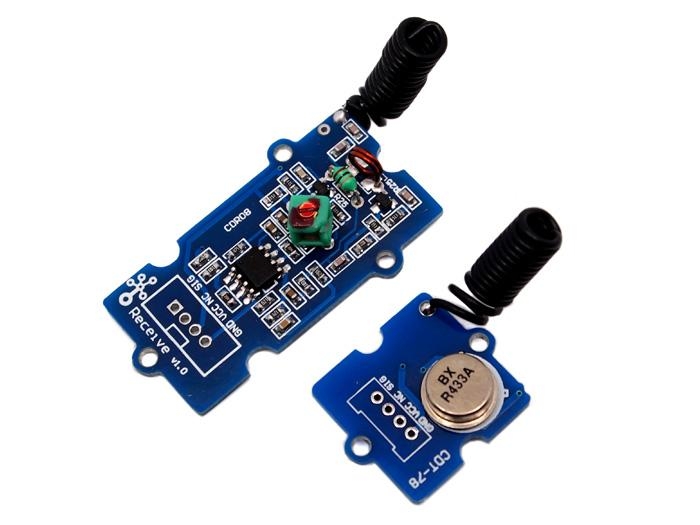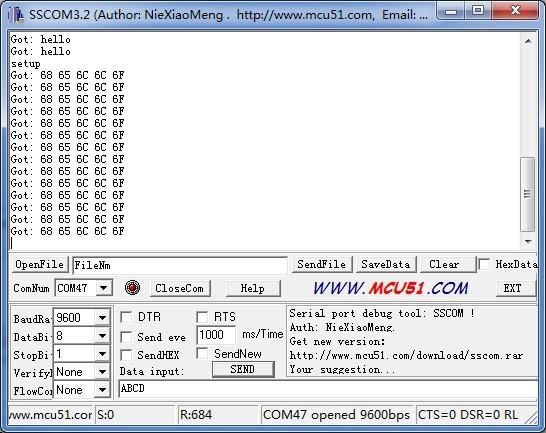Grove 433MHz Simple RF Link Kit

This kit is used for one way wireless communication at a frequency of 433MHz and includes a transmitter module and a receiver module. The twig configuration of this kit allows for around 40 meters of transmitting distance indoors, or around 100 meters outside.
Version Tracker
Revision
Description
Release
v0.9b
Initial public release
03,Oct,2011
Features
GROVE compatible interface.
Uses ASK (Amplitude Shift Keying) Modulation.
One way communication.
!!!Tip More details about Grove modules please refer to Grove System
Specifications
Transmitter Module
Item
Min
Typical
Max
Unit
Working Voltage
3.0
5.0
12.0
VDC
Current
3
/
10
mA
Work Mode
ASK
/
Transmit Power(Max)
15
mW
Working Distance
40
/
100
m
Receiver Module
Item
Typical
Unit
Working Voltage
5
VDC
Quiescent Current
5
mA
Receiver Sensitivity
-105
dBm
Operating frequency
433.92
MHz
Application Ideas
Remote control
Remote automation
Alarm
Usage
The transmitter and receiver modules both rely on a single wire for communication. Though using the UART supplied by the Arduino platform can work, it is recommended, instead, to use the VirtualWire library which uses Amplitude Shift Keying for modulation which provides better communication.
Both the transmitter and receiver modules require three wires: Vcc, Ground, and signal. Pin 2 of both parts of the kit are not connected.
Connect the Transmitter module to Digital I/O 2 of the Grove-Base Shield V2 on the Arduino being used for transmission.
Error creating thumbnail: Invalid thumbnail parameters
Connect the Receiver module to Digital I/O 2 of the Grove-Base Shield V2 on the receiving Arduino.
Error creating thumbnail: Invalid thumbnail parameters
Download the VirtualWire library and unzip it into the libraries file of Arduino IDE by the path: ..\arduino-1.0\libraries. Please reference here.
Upload the code below for transmitter module:
Upload the code below for receiver module:
Open the serial monitor of receiver module to see the result.

This is just a simple transmitter and receiver instance as a reference.
Resources
Last updated
Was this helpful?